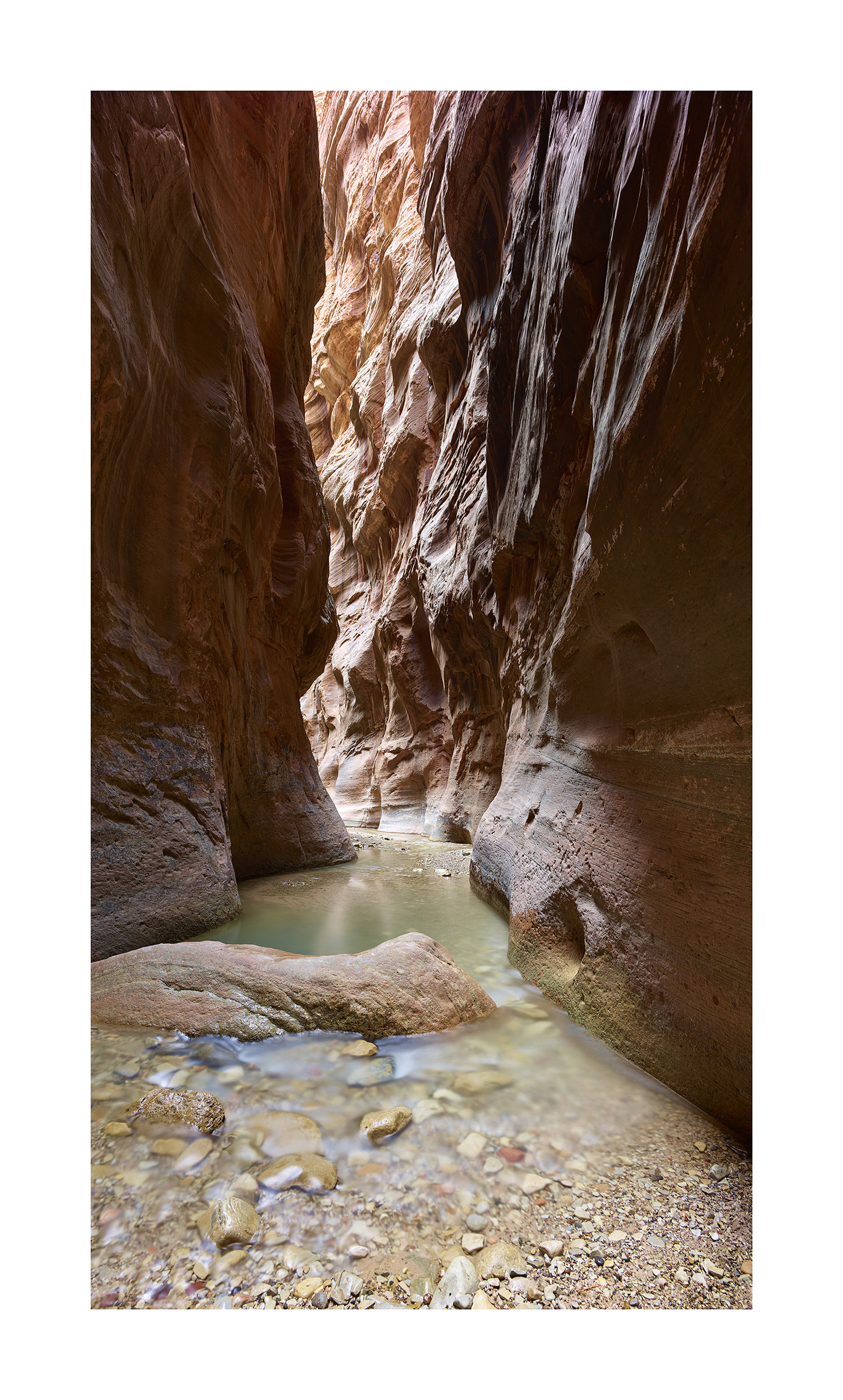I was shooting the Narrows last weekend. It was a stunning location and used all of the limited skills I have - both photographic and physical 
A lot of the scenes were challenging for both exposure and focus, so I bracketed for both.
Question I have is on use of tilt. I was using my RM3Di/32HR which allows for 5mm tilt/swing in either direction. In scenes like the one below, which is typical of the location, I was trying to get the foreground and back ground in focus. Foreground is just a few feet, and the background is in the 100's, and in other cases close to infinity.
With downward tilt, I was losing the focus at the top of the image (distant part of the image). I ended up bracketing for focus and will be stacking. However, is there a solution with tilt in this case?
On exposure, some of the scenes were 6-8 stops off, so I don't think there is any way around it than bracketing and blending.
Appreciate your thoughts.

A lot of the scenes were challenging for both exposure and focus, so I bracketed for both.
Question I have is on use of tilt. I was using my RM3Di/32HR which allows for 5mm tilt/swing in either direction. In scenes like the one below, which is typical of the location, I was trying to get the foreground and back ground in focus. Foreground is just a few feet, and the background is in the 100's, and in other cases close to infinity.
With downward tilt, I was losing the focus at the top of the image (distant part of the image). I ended up bracketing for focus and will be stacking. However, is there a solution with tilt in this case?
On exposure, some of the scenes were 6-8 stops off, so I don't think there is any way around it than bracketing and blending.
Appreciate your thoughts.

